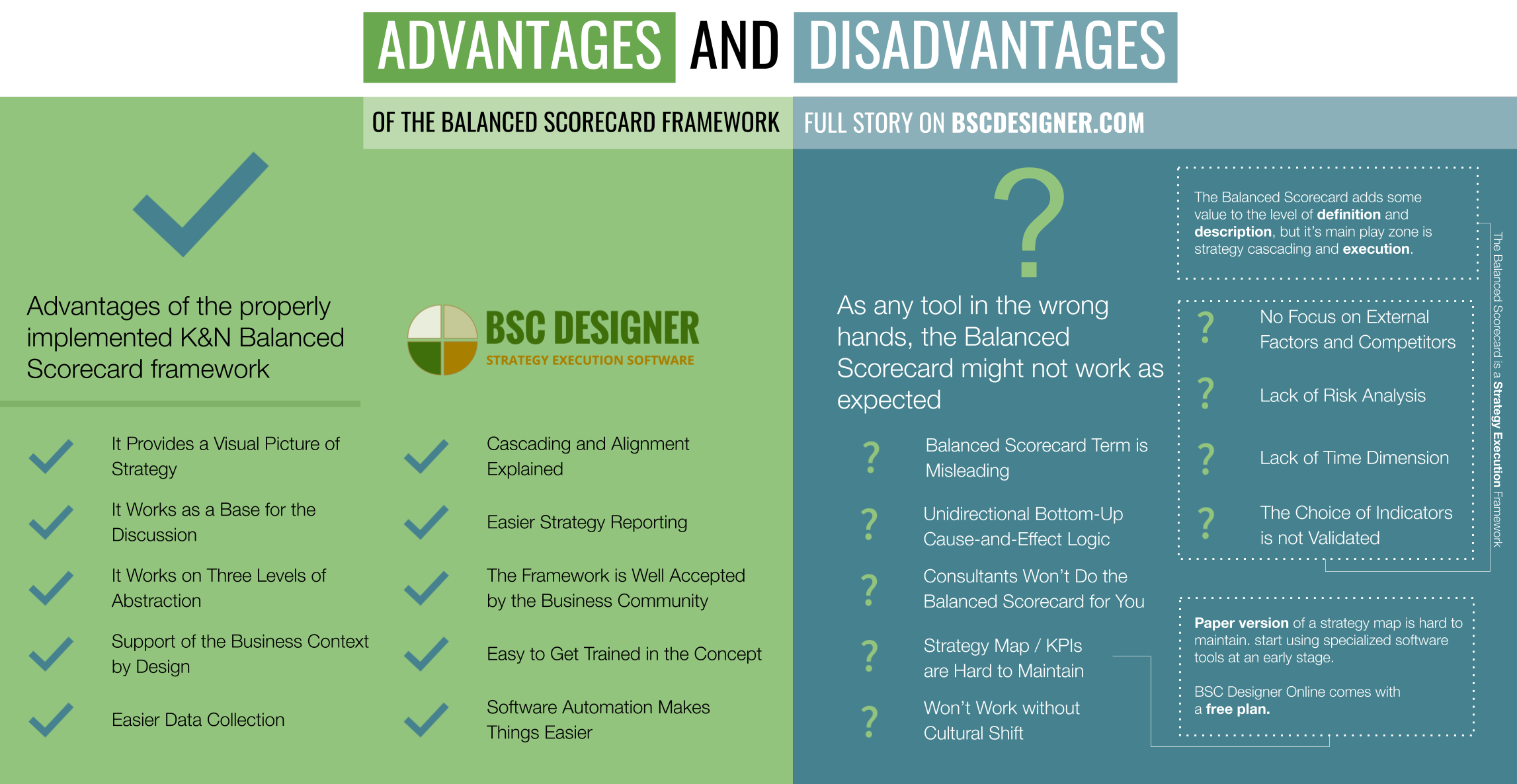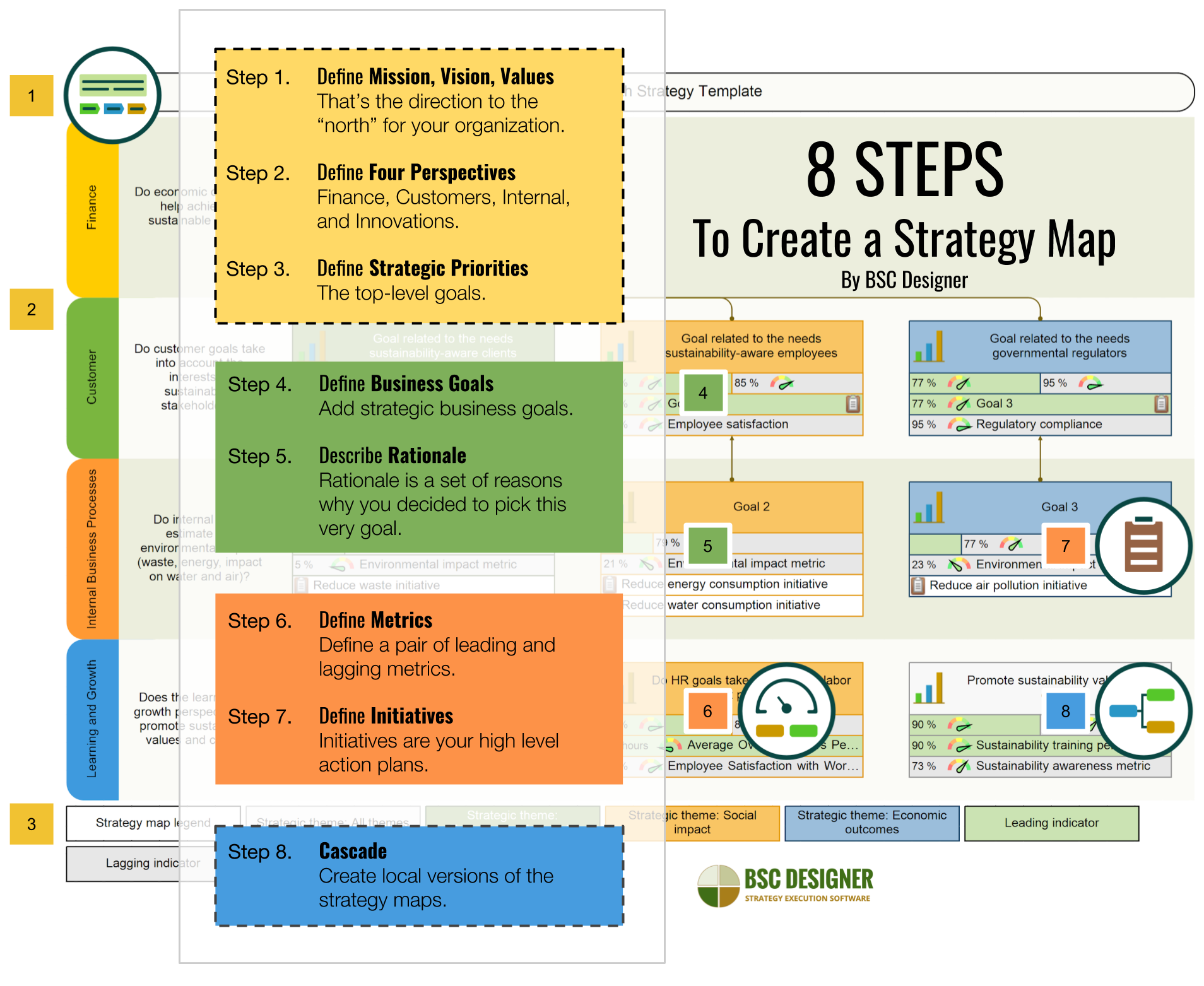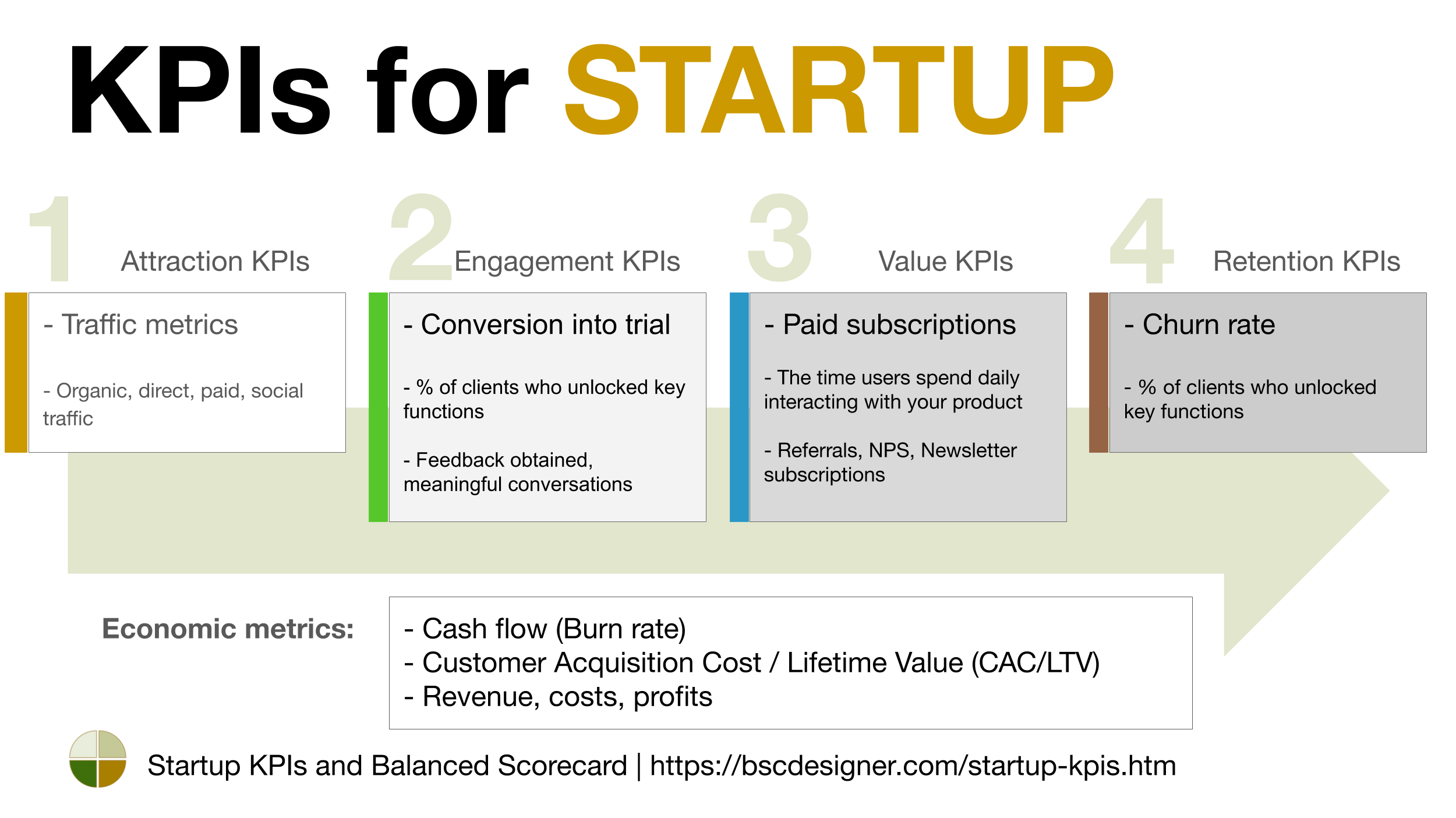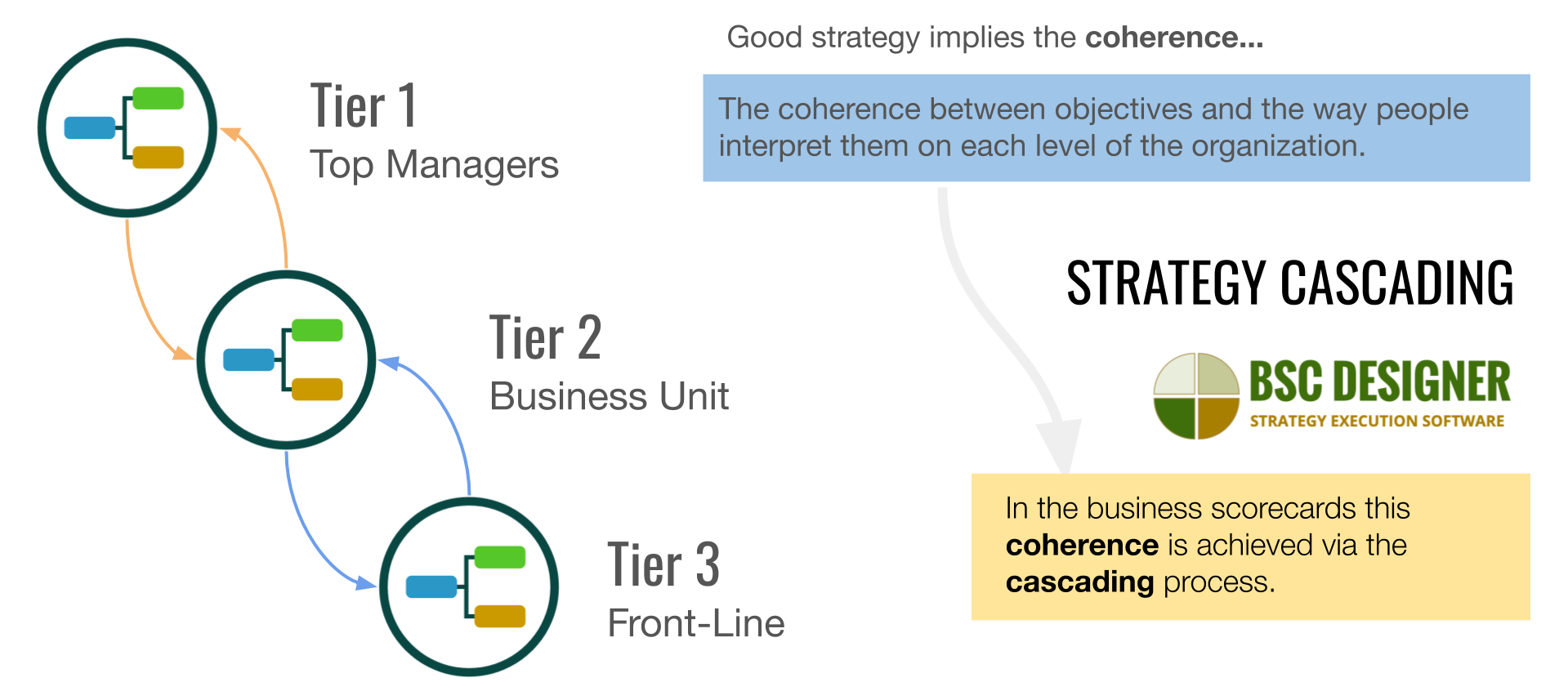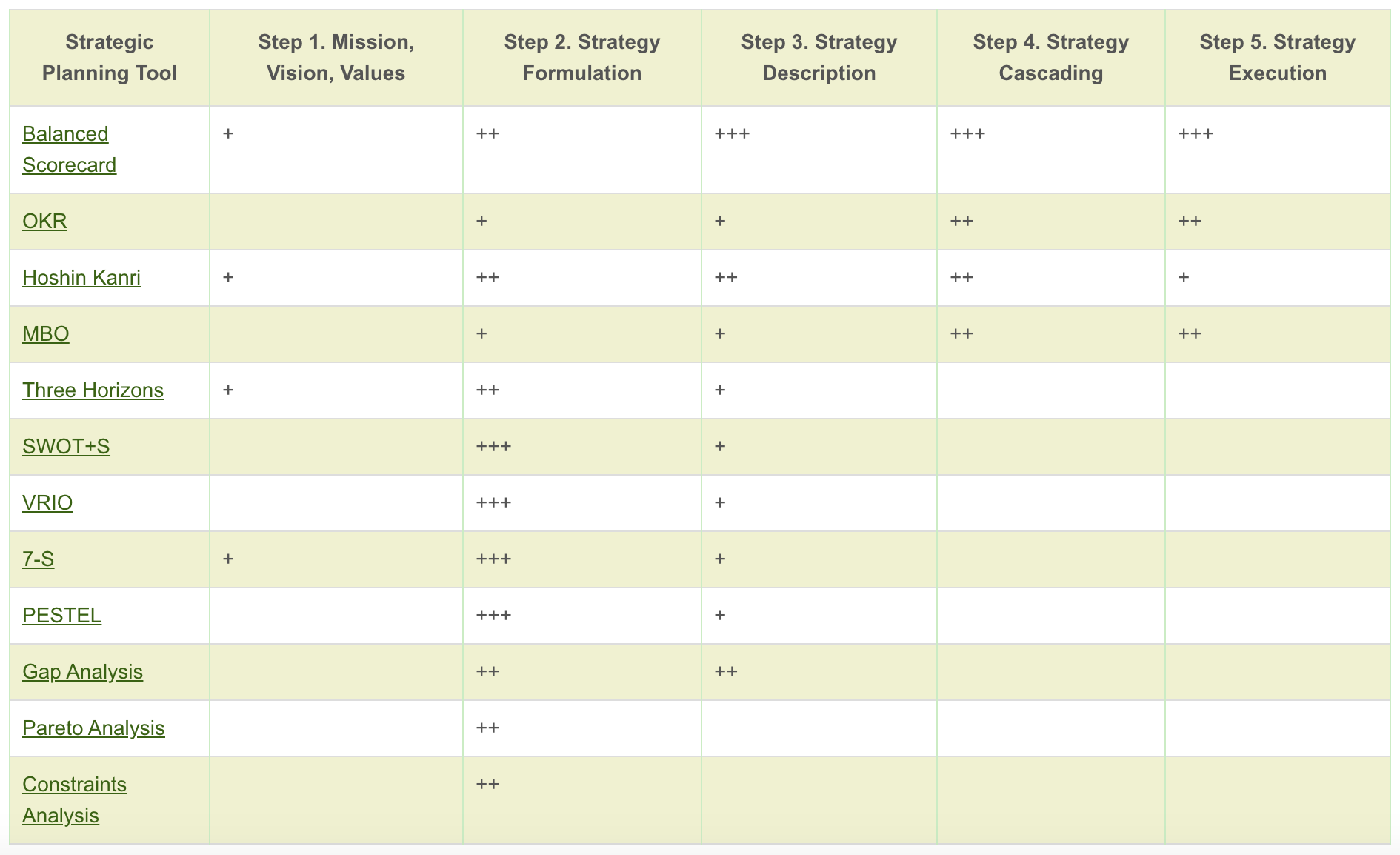The Balanced Scorecard is a popular strategy execution framework. In this article, we’ll explore the possibilities of applying this business tool on a personal level.
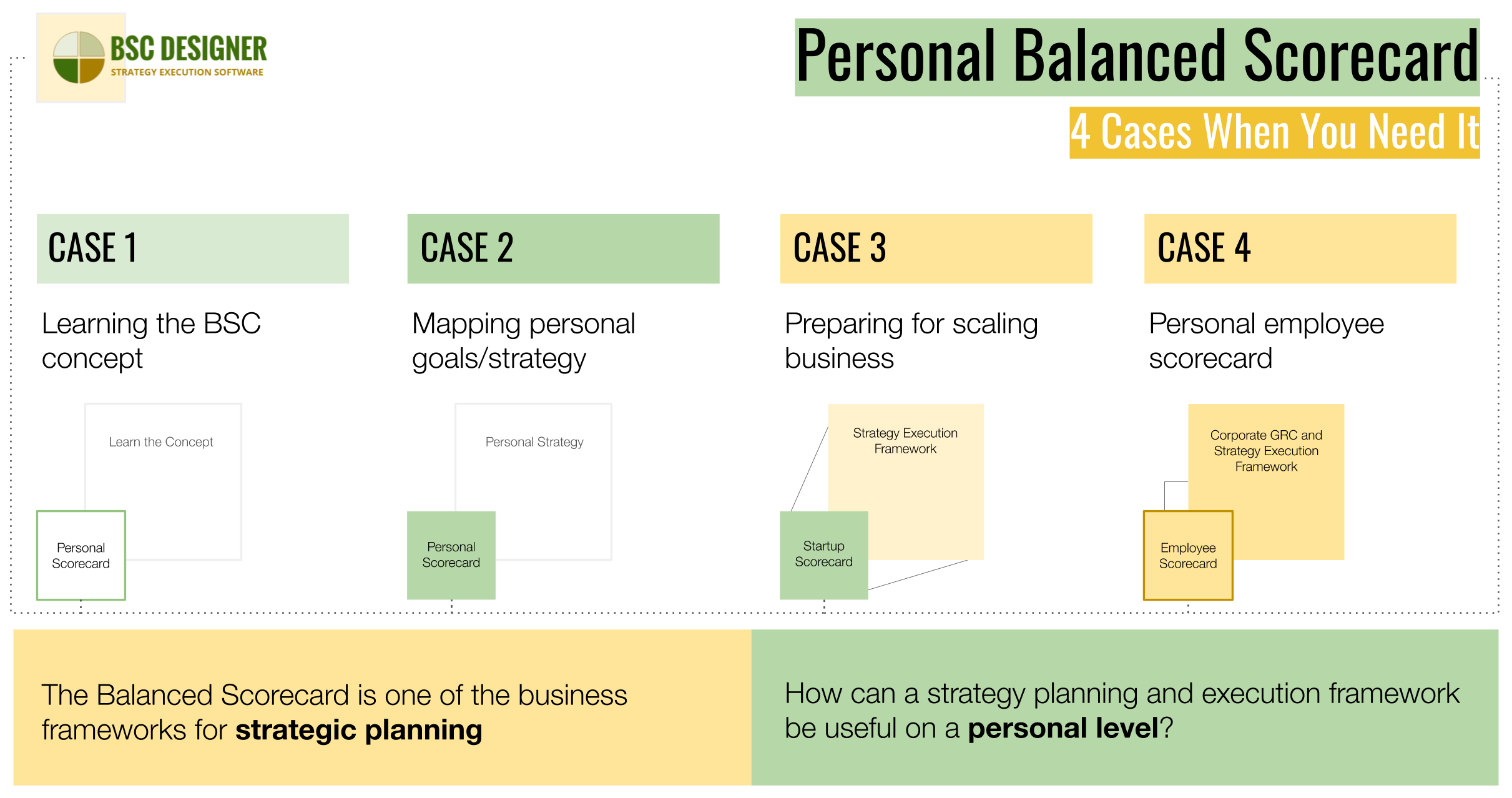
Why get started with a personal Balanced Scorecard:
- Case 1. Learning the BSC concept
- Case 2. Mapping personal goals
- Case 3. Preparing for scaling business
- Case 4. Personal employee scorecard
- Software automation options
A Quick Introduction of the Balanced Scorecard
The K&N Balanced Scorecard is a strategy execution framework. It is about strategy, business goals, the way to align an organization around a common mission and vision. The Key Performance Indicators (KPIs) help to make the goals more tangible, but they are not the key players.
The Balanced Scorecard is one of the business frameworks for strategic planning. It has its advantages and drawbacks. One of the disadvantages of the Balanced Scorecard is the term itself.
People often confuse the Balanced Scorecard (the strategy execution framework introduced by professors Kaplan and Norton) with the KPI scorecard, where the metrics are grouped into four perspectives (we discussed some important differences here). In this article, we’ll focus on the K&N Balanced Scorecard.
Strategic Planning on Personal Level
“Strategic planning” sounds like something from the world of international organizations. A logical question is:
How can a strategy execution framework be useful on a personal level?
Here, you have some typical cases why people want to get started with a Personal Balanced Scorecard:
- Case 1. Learning the BSC concept. You need to learn a Balanced Scorecard as part of your MBA studies, or you are self-educating to add it to your business toolkit, promote to your boss, or just out of pure curiosity.
- Case 2. Mapping personal goals/strategy. The comprehensive implementation of the Balanced Scorecard is too complex for personal use, but still, we can learn a lot from it.
- Case 3. Preparing for scaling business. Think about a home-based business or a startup company. Such business has not faced the difficulty of articulating and sharing common strategy yet but already has many KPIs to track and probably some strategy to show to the investors.
- Case 4. Personal employee scorecard. You work in a large organization that uses the Balanced Scorecard or similar as a strategy execution framework, and your challenge is to create a local level personal scorecard.
Case 1. Personal Scorecard Helps to Learn the Balanced Scorecard Concept
The best way to learn something is to do it in practice. You can learn the Balanced Scorecard framework by building an imaginary strategy for an imaginary company, but this approach feels like an artificial one. Why not give it a try for personal goals?
The benefit, in this case, is not in the final point (like, for example, having a strategy map or doing quarterly reports according to the KPIs) but in the journey itself.
How to build a personal Balanced Scorecard? By following the same principles in the case of the classical Balanced Scorecard:
- Map your learning and “infrastructure” (such as health and education) goals in the
 Learning and growth perspective.
Learning and growth perspective. - Map the improvements you think about in the
 Internal perspective.
Internal perspective. - Map the needs of the “customers” (clients of your business, your boss, your colleagues) in the
 Customers’ perspective.
Customers’ perspective. - Map the expected results for the stakeholders (yourself, your family, community) in the
 Stakeholders’ perspective.
Stakeholders’ perspective. - Find the metrics for the goals.
- Formulate more specific action plans via initiatives.
One difficulty that you will certainly face is that some stakeholders might be presented in several perspectives at the same time. How to manage this? See the examples of the scorecards for nonprofits and universities for some ideas.
Below, I’ve formulated some ideas of the framework in the form of short exercises.
Exercise 1. Experience Leading and Lagging Indicators
I’m sure you’ve heard about the importance of measuring things:
- What gets measured gets done
and
- You cannot win the game without knowing the score
Less obvious, but a very powerful idea is that the measurement depends on the context. In the business world, this idea is explained by leading and lagging indicators.
Here is the exercise to do:
- Think about some personal goal.
- Find the way you can quantify (assign numerical value) the results of this goal. This will be a simple lagging indicator.
- Find the way you can quantify the efforts needed to achieve this goal. This will be a simple leading indicator.
What do most people measure?
- Common sense tells us that we need to measure both types of indicators because we work hard (measured by leading metrics) to achieve certain results (measured by lagging metrics).
- In practice, especially in a business environment, people focus too much on the lagging metrics but forget about the leading ones.
There are two important lessons you can learn:
- For all your personal goals, know the leading and lagging metrics (the success factors and the expected results).
- The best practice is to keep both types of metric in mind.
And, by the way, the metrics are an excellent way to make any goal more specific.
Exercise 2. Understanding the Power of Rationale
Rationale is the logic behind the goals, the reasons why you have them.
Many goals fail because the required tools and the methods are not available yet. You dramatically increase your chances of achieving the goal if you think about the deep reasons behind this goal. You start asking the right questions at an early stage when the price of mistakes is low.
Here is the exercise to do:
- Formulate your goal:
- Think about the reasons to have this goal on your scorecard
- Think about how this goal is connected to other goals
- Think about the alternatives
- Think about the possible risks and response plans
- Formulate your findings in the description of the goal
- Plan to get back to your records next time you revise your goals
Exercise 3. Understanding Strategy Maps
A strategy presented visually on the strategy map works much better than the strategic plan on 100+ pages.
In this case, the exercise consists of experiencing the power of strategy maps:
- Check out the 8 step guide to build a strategy map.
- Use a free strategy wizard tool. It will ask you a number of questions and will help to build your strategy map.
Give it a try several times. Look at the questions that the software asks; these are the questions that you need to ask yourself when building your next strategy map.
I’m sure you’ll master these 8 steps and will find the wizard tool useful!
Exercise 4. Strategic Framework is for Strategic Goals
People often say, “we need to think strategically.” What exactly does it mean? I guess, in most cases, people refer to having a bird’s-eye view at the problem and understanding long-term consequences.
In the business domain, the difference between strategic and operational is not clear. Before, we could say that all long-term initiatives are strategic ones; now, it’s not the case, as some short-term actions might have an important strategic impact.
Here is an exercise:
- Check out the comparison table in the article about strategic vs. operational
- Try to sort your goals according to strategic/operational criteria.
- Do you have a balanced set of strategic/operational goals? Do you have at least a few game-changing goals on your strategy scorecard? Is anything missing?
Exercise 5. Strategy is Not a List of Things to Do
Most of the first attempts to create a strategy map look like an exaggerated list of things to do. An educational system trains us to plan things carefully, avoid mistakes, and pass tests. When it comes to strategy execution, the important skill that we need is an ability to make controlled experiments (e.g., make mistakes and learn from them).
Strategy is not a fixed plan, respectively, and a strategy map should not be a list of things to do.
Strategy is about formulating educated hypotheses (business goals) and confirming them using the performance metrics.
Here is an exercise for you. Revise your strategy map with a “controlled experiments” mindset:
- Are there experiments that are not defined well? For example, the goals without metrics that can validate them?
- Are there obvious experiments that don’t need to be confirmed? For example, the goals that should be moved to your todo list or converted into strategic initiative.
Case 2. Mapping Personal Strategy with Balanced Scorecard
I think that implementing a full version of the Balanced Scorecard framework won’t make sense for a personal strategy scorecard. Still, we can use some of its parts…
Most likely, you won’t use:
- Strategy cascading
Probably, you will find some use of:
- Vision, mission, values statements
- Strategic themes
- Strategic initiatives
Finally, you will find really useful:
- Having a few well-defined leading and lagging metrics (see the explanation above)
- A disciplined approach to the formulation of the goals (see the rationale exercise above)
- A strategy map as a visual diagram for the strategy
- Regular reviews of your achievements
If you are looking for a more light-weight alternative of the Balanced Scorecard for the personal level strategy, then check out the OKR framework.
Case 3. Preparing to Scale Your Business
That’s an interesting case. Most likely, your startup has not faced the problems of big players:
- You don’t have teams and business units that need coherent guidance.
- You don’t have complex strategies with hundreds of performance indicators.
- You don’t plan many initiatives with budgets and timelines.
Your startup is small, but you already find that:
- There are many interesting metrics that you would like to track.
- There are many “why” and “how” of your strategy that need to be shared with your team in some way.
- While you find ways to manage things today, you understand that tomorrow, this might become a cultural problem.
My recommendation, in this case, is to organize strategy discussions early. Again, it’s not about formalizing all the process and assigning KPIs to all control points (not a bad idea, if your metrics are linked to the value you create). The idea is to plant the seeds of the future strategy discussion and performance measurement culture.
Case 4. Personal Employee Scorecard as a Part of Corporate Strategy Framework
In this case, your options are dictated by the strategy description and discussion traditions in your organization, and the GRC and/or strategy execution framework used now. Check out this article to understand where your organization is in terms of strategy cascading.
Ideally, you need to have:
- Access to the higher-level goals that you can contribute to (feel free to refer to this article if your boss doesn’t want to do this).
- A bi-directional communication channel so that you can get feedback from your manager and let your managers know about a better way to approach some challenges.
- Access to the big picture of strategy so that you can understand the priorities of organization.
In this case, it’s a good idea to have a general understanding of how the Balanced Scorecard framework compares to other strategy planning tools, such as SWOT, PESTEL, OKR.
Software Automation for Personal Scorecard
I assume you are just getting started with strategic planning and have no need/no budget for professional tools. Here are my recommendations for this case.
- If you want to learn the Balanced Scorecard concept – use the Strategy Wizard, and sign up with a free plan of BSC Designer Online
- If you are building a prototype of a KPI scorecard – use Excel (you can find some video lessons here) or freeware BSC Designer Light for Windows
- If you are trying the Balanced Scorecard concept and plan to scale someday – start with the free plan of BSC Designer Online
In case 4 (working on your employee scorecard), your choice depends a lot on the software used in the organization. In most cases, Excel spreadsheets can be used to import/export the data.
Do You Have More Cases?
It would be great to hear your story about creating a personal scorecard. Feel free to share in the comments.
BSC Designer is strategy execution software that enhances strategy formulation and execution through tangible KPIs. Our proprietary strategy implementation system reflects our practical experience in the strategy domain.
